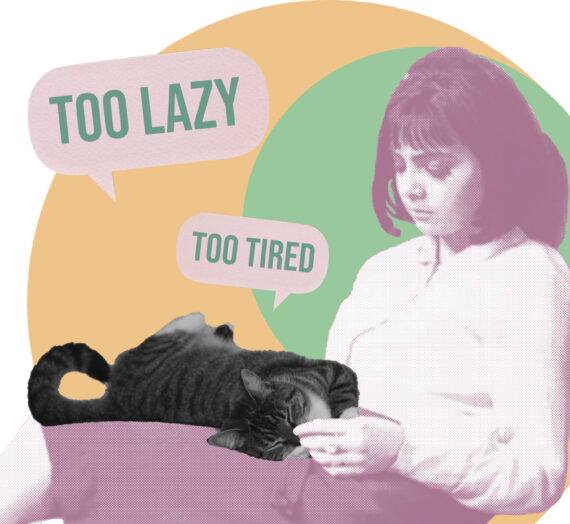A missed alarm. Losing your phone. Petty arguments. What do these things evoke in common? Stress. Not in a big way however, but enough to build up and eventually expose you to higher risk of illness and decreased well-being. These things—called micro-stressors—can be detrimental to your health, which is why it is important to avoid them.
Unfortunately, they happen so often in our daily lives that we tend to accept them as part of our normal routine. This is why micro-stressors are also called “daily hassles“. They are defined in this study as “irritating, frustrating, distressing demands that to some degree characterize everyday transactions with the environment”.
This normalcy is also what makes it dangerous. Because we dismiss these stressors as common, we don’t take steps to actively address or reduce them. The result is that we end up frustrated, irritable, and exhausted—setting the stage for all the negative effects of stress.
So how exactly do we tackle these micro-stressors and avoid them?
Table of Contents
Identifying micro-stressors to avoid them
The first step is to identify what those micro-stressors are in your routines. We all have different situations, so our daily hassles will also vary. If you’re working from home, chances are you won’t be experiencing the stress of a late bus or unexpected traffic. You might however, get annoyed at a noisy neighbor while on an important meeting.
To do this, mentally go through your day. Try to be as detailed as possible and list down the things that irritate or inconvenience you, no matter how small. This can be as simple as being annoyed at dirty dishes in the sink or a default reaction to seeing 100 unread emails in your inbox. You can also rate how stressful they are on a scale of 1-10.
To help you out, you can use this free chart in my resource library.
Brainstorming ways to remove them
After you’ve listed down all the daily hassles in your routine, go to those with low numbers. Usually, these are the easiest to remove and resolve. Think of ways that this micro-stressor could be avoided. For example, if you listed “unmade bed” or “messy drawer”, the solution would be to make it as soon as you wake up or organize the drawer.
Go through your list in order of least to the most stressful. Some will be easy to resolve but other items might be harder. You might need to talk to your roommates or family members to discuss this and also request for their cooperation. And in some cases, you will need to compromise to make it work for all of you.
Try to think of steps that are actionable and will lead to results. For instance, for those “100 unread emails”, you can’t just say, “I will force myself to not react to them”. That doesn’t really solve the root of the problem. Instead, you want definite steps such as unsubscribing to newsletters that you don’t read, or moving some conversations to chat.


On things you can’t change
Once you get to some of the most stressful micro-stressors on your list, you might find that you can’t really remove some of them. For example, if it’s directly related to someone else’s personality or traits, then it might be difficult to change unless you’re close to them and can talk to them about what’s bothering you.
In these situations, sometimes the best and only step you can take is to be the one to change. Look inward and ask yourself why this action stresses you out. You might find that your reason is irrational or petty, and that you can resolve to let it go. You can also choose to step into that person’s shoes. Oftentimes, changing your perspective can make you realize many things, prompting a positive change in your reactions.
Related: 3 Ways To Spring Clean Your Heart
Other steps to take
It’s important to also take other steps to ensure your stress is in healthy and manageable levels. Especially now when routines have changed and we’ve only just settled on a new normal, there might be a lot of micro-stressors that we haven’t identified yet. Make sure you don’t wait until these red flags show, and wind down!
Here are some ideas to relax and have some me-time to yourself:
- practice yoga
- read a relaxing book
- breathe
- listen to relaxing music
- draw or doodle
- talk to friends
- take a walk
For more ideas on how to relax your body, heart, mind, and soul, read my relax series.


Avoid micro-stressors from now on!
Now that you know what micro-stressors are, make sure to be aware of and take steps to avoid them. When our routines change, new hassles may appear, and most of them can be prevented by simple measures. Don’t wait for the stress to build up and lead to burnout and sickness, but instead be proactive!
If you find this helpful, leave a comment below to share your thoughts and any tips as well! Wishing you a micro-stress-free daily routine!
Liked this? You might like:
Steps To Take For Better Work-Life Balance
How To Stop Constantly Apologizing: 6 Tips To Stop Saying the “S” Word
6 Mind Vacations You Can Take Right Now








Comet Haley
Wow, I never even thought about the little things in my day that impact my stress levels! I’m definitely trying your advice!
Kathleen
I’m glad I was able to help! We definitely don’t want these daily hassles to be building up and burn us out. 🙂
Casually Coastal
Some great tips in this post! Thank you!
Kathleen
Glad you liked it! 🙂